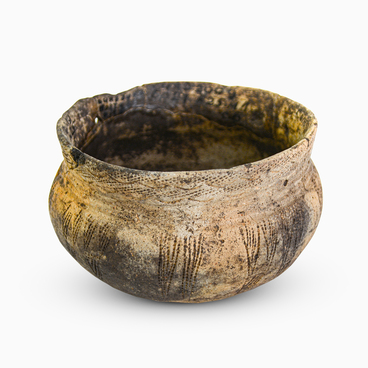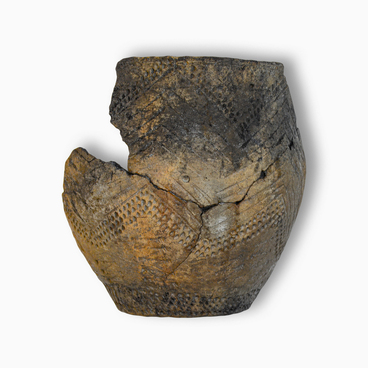The museum’s collection features a sapper fascine knife of the 1824–1827 model. The steel blade of the cleaver is of slight curvature, single-bladed, with one wide groove, and a double-bladed fighting end. The spine of the blade is made in the form of a saw (the number of teeth is up to 25). The hilt is brass or copper and consists of a handle with a pommel and a crosspiece. The handle has transverse grooves. The back of the handle is covered by a strap that passes into the head, in which there is a hole for a lanyard (special cord). Cleavers of this type were also produced without a hole in the pommel. The ends of the crosspiece are slightly bent in opposite directions — up and down. The year of manufacture is stamped on the handle — 1830.
Due to the peculiarities of its use, such a cleaver was also called a “fascine knife”. The teeth of the saw, located on the spine, were used to saw rods for the manufacture of fascines — bundles of branches and brushwood, which were used to fill ditches and pits, paving fascine roads made of logs or brushwood to pass through a marshy place. It was also used to cut down thin trees for the construction of wooden and earthen military field structures.
This sample of the cleaver was approved by the weapons commission in 1824. The number of teeth was reduced to 23 (the model of 1817 had 49 teeth). Instead of wooden handles, which quickly wore out, copper ones were adopted for guards units, and iron ones for army units. Hilt tips were made of the same metal. The appearance of the weapon remained unchanged.
In 1827, the Supreme Order recommended that the handles and tips of the army fascine knives should be once again made according to the Supreme Approved Model — from green copper, and fascine knives for the guards — from red copper. The weight of a fascine knife in the scabbard is 1945 grams, without the scabbard — 1535 grams. For the fleet, 20,000 cleavers were redesigned by removing the saw.
In 1827, the lower ranks of the sapper and pioneer
battalions and the engineers started using this model instead of a sapper
fascine knife of the 1797 model, which was longer and had a wooden handle. In
1834, this type of weapon was replaced in the army with a sapper fascine knife
of the 1834 model and removed from service. This was due to the low strength of
the hilt, which could break during intensive rods cutting, as well as the fact
that the saw threads were rare and flat. A fairly small number of such items
have survived to this day.

